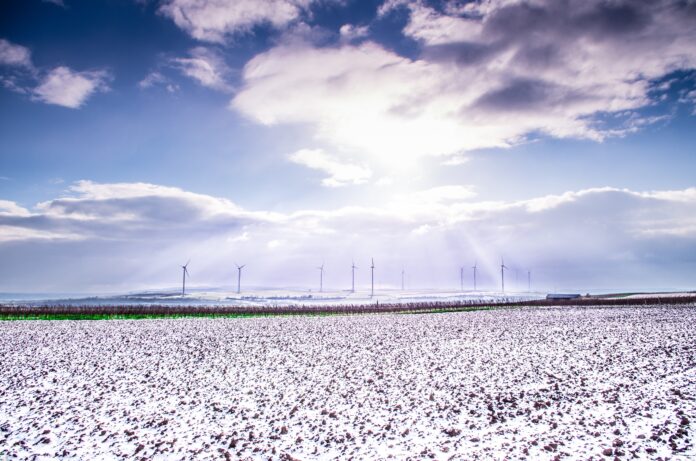The Dust Bowl, often referred to as the “Dirty Thirties,” was a severe environmental and agricultural crisis that occurred in the United States during the 1930s. It was characterized by a series of devastating dust storms that swept across the Great Plains region, primarily affecting the states of Oklahoma, Texas, Kansas, Colorado, and New Mexico. The Dust Bowl was a result of a combination of natural factors and human activities, primarily unsustainable farming practices and severe drought conditions. The consequences of the Dust Bowl were far-reaching, causing widespread ecological, economic, and social devastation.
The Dust Bowl was primarily caused by a combination of severe drought, high temperatures, strong winds, and the agricultural practices of the time. During the 1920s and early 1930s, farmers in the Great Plains region underwent a period of rapid expansion and cultivation. With the introduction of mechanized farming techniques and the widespread conversion of grassland into farmland, large-scale plowing of the land became commonplace. This process, coupled with the lack of proper soil conservation methods, resulted in the removal of the protective layer of prairie grasses that held the topsoil in place.
The removal of the grass cover left the soil exposed, making it vulnerable to erosion by wind and water. When the drought hit the region in the early 1930s, the soil, already depleted of moisture due to improper farming practices, dried up and turned into dust. The strong winds that swept across the Great Plains easily lifted the loose topsoil into the air, creating massive dust storms that darkened the skies and carried the soil for hundreds of miles. These dust storms, also known as “black blizzards,” were accompanied by choking dust clouds that infiltrated homes, covered fields, and affected the health of humans and animals.
Here are ten important things to know about the Dust Bowl:
1. Duration and affected region: The Dust Bowl lasted for nearly a decade, from 1930 to 1939. The worst years were between 1934 and 1936. The region most affected was the southern and central Great Plains, covering parts of Oklahoma, Texas, Kansas, Colorado, and New Mexico.
2. Environmental conditions: The Dust Bowl was exacerbated by a combination of severe drought, high temperatures, and strong winds. Rainfall levels dropped significantly, and temperatures soared, creating a dry and arid environment.
3. Human factors: Unsustainable farming practices, such as extensive plowing and monoculture, contributed to the vulnerability of the soil. Lack of crop rotation, overgrazing by livestock, and the removal of natural prairie grasses added to the soil’s degradation.
4. Economic impact: The Dust Bowl resulted in significant economic losses. Crop failures were widespread, leading to massive financial hardships for farmers and agricultural communities. Many farmers were forced to abandon their land and migrate to other regions in search of work.
5. Environmental degradation: The dust storms caused by the Dust Bowl resulted in severe soil erosion. The topsoil, essential for crop growth, was blown away or deposited in rivers and streams, leading to reduced soil fertility and decreased agricultural productivity.
6. Human health consequences: The dust storms caused respiratory problems for many people, leading to a significant increase in cases of “dust pneumonia” and other respiratory illnesses. The fine dust particles also affected eyesight and caused discomfort.
7. Migration and displacement: The Dust Bowl triggered one of the largest internal migrations in U.S. history. Thousands of farmers and their families left their homes and traveled to other states, especially California, in search of employment and better living conditions. This migration was captured in John Steinbeck’s novel “The Grapes of Wrath.”
8. Government response: The federal government responded to the Dust Bowl crisis through various initiatives. One of the most notable was the establishment of the Soil Conservation Service (now known as the Natural Resources Conservation Service) in 1935. The agency aimed to promote soil conservation practices, such as contour plowing, strip cropping, and windbreaks, to prevent further erosion and improve soil health.
9. The New Deal programs: As part of President Franklin D. Roosevelt’s New Deal, several programs were implemented to address the socio-economic impact of the Dust Bowl. The Civilian Conservation Corps (CCC) provided employment opportunities for young men to engage in reforestation, soil conservation, and land rehabilitation projects. The Works Progress Administration (WPA) also provided jobs for those affected by the crisis, focusing on infrastructure development and soil conservation efforts.
10 Environmental and agricultural reforms: The Dust Bowl served as a catalyst for significant environmental and agricultural reforms. It led to the adoption of better land management practices, including crop rotation, terracing, and the use of cover crops to improve soil fertility and prevent erosion. The federal government also introduced agricultural subsidies and price stabilization measures to support farmers during periods of economic hardship.
Scientific research and education: The Dust Bowl prompted increased scientific research and education on soil conservation and sustainable farming practices. Agricultural experts and scientists conducted studies to understand the causes of soil erosion and to develop effective solutions. Extension services and agricultural colleges disseminated information and provided training to farmers on soil conservation methods.
Long-term ecological impact: The Dust Bowl had a lasting impact on the ecology of the Great Plains. The loss of topsoil and the destruction of natural habitats affected plant and animal biodiversity. It took several decades for the region’s ecosystem to recover, and the scars of the Dust Bowl are still visible in certain areas.
Cultural and artistic representations: The Dust Bowl left an indelible mark on American culture and art. The experiences of those affected by the crisis were documented in photographs, literature, music, and film. The photographs of Dorothea Lange and the songs of Woody Guthrie, for example, captured the hardships and resilience of the Dust Bowl era.
Lessons learned: The Dust Bowl serves as a powerful lesson in the importance of sustainable land management and environmental stewardship. It highlighted the need for conservation practices, the preservation of natural resources, and the recognition of the interdependence between human activities and the environment.
Modern-day relevance: While the Dust Bowl was a unique event in American history, its lessons remain relevant today. It serves as a reminder of the potential consequences of unsustainable land use practices, the importance of responsible agriculture, and the need for proactive measures to mitigate and adapt to environmental challenges, such as drought and climate change.
In conclusion, the Dust Bowl was a devastating environmental and agricultural crisis that occurred in the 1930s in the Great Plains region of the United States. It was caused by a combination of severe drought, unsustainable farming practices, and strong winds. The consequences of the Dust Bowl were widespread, leading to ecological degradation, economic losses, human displacement, and significant social and cultural impacts. The crisis prompted government intervention, the implementation of conservation practices, and long-term changes in environmental and agricultural policies. The Dust Bowl remains a powerful reminder of the importance of responsible land management and environmental stewardship.






















